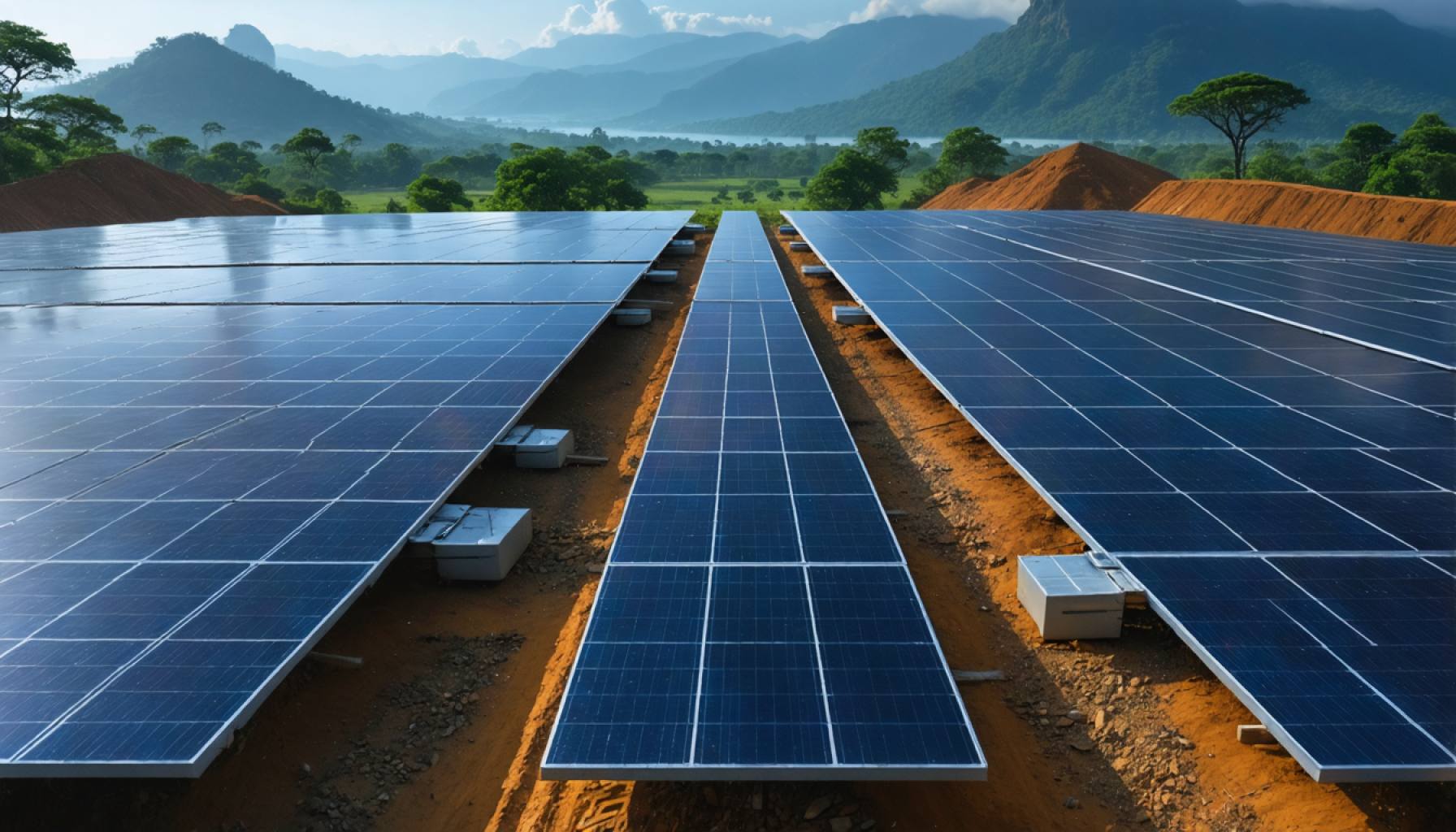- The Rift Valley’s tectonic plates drift apart, unveiling geothermal energy potential and hinting at future ocean formation.
- Bitcoin mining machines in Africa utilize surplus geothermal energy, transforming it into cryptocurrency, reducing energy waste.
- This initiative integrates renewable energy with digital finance, offering a sustainable model in a mostly non-renewable global Bitcoin mining landscape.
- While some experts see this as a temporary solution, it underscores Africa’s potential for innovative energy and technology intersections.
- The project prompts discussions on sustainable practices in technology and reveals a pathway to using untapped renewable resources worldwide.
- This partnership reflects a shift towards balancing energy production and consumption sustainably amid the backdrop of environmental concerns.
Amid the sweeping plains of Africa’s Rift Valley, where zebras lazily graze under the vast Serengeti skies, an invisible transformation is taking place far beneath the earth. The tectonic plates, ancient guardians of the land, are gradually drifting apart, promising a future metamorphosis into an ocean. For now, they bestow a different gift: an abundance of geothermal energy. This natural boon is a dynamic force, though it often exceeds the practical needs of local communities.
Enter an unexpected player in this energy landscape—a handful of technological marvels tucked away in an aluminum shipping container. These Bitcoin mining machines, hardly bigger than shoeboxes, devour the surplus electricity that the geothermal plants produce. They’ve become saviors of sorts, transforming potential waste into digital gold.
The spectacle of cables stretching out from the power plants, like tendrils connecting earth to innovation, signals a pivotal shift. As the world grapples with the environmental impact of Bitcoin, which guzzles energy at a rate akin to a nation like Poland, this small initiative in Africa offers a glimpse of a possible future. By aligning cryptocurrency operations with renewable energy sources, we may be inching towards a more sustainable solution.
Globally, Bitcoin mining predominantly relies on non-renewable energy sources, amplifying its ecological footprint. But the Rift Valley project flips the script, using what would be idle electricity to power a digital economy. This endeavor not only showcases a cleaner approach to cryptocurrency but also underscores Africa’s potential as a hub of innovative solutions, fostering a space where renewable energy and digital finance intersect.
While some experts caution that this alliance might be a stopgap rather than a lasting resolution to energy storage challenges, for Africa, it’s a transformative bridge. In regions where generating electricity itself remains a primary concern, Bitcoin miners are unwittingly playing a crucial role. They not only utilize excess energy but also catalyze discussions about sustainable practices in technology.
This unlikely partnership hints at a broader narrative—a future where untapped renewable resources across the globe could be harnessed for digital endeavors. As the tectonic plates continue their patient journey, reshaping lands and histories, perhaps so too will our methods of producing and consuming energy follow a path toward a more harmonious balance.
The Surprising Connection Between Bitcoin Mining and Geothermal Energy in Africa’s Rift Valley
Geothermal Energy and Bitcoin Mining: A Sustainable Match?
Amid Africa’s Rift Valley’s serene landscapes, beneath which tectonic plates slowly drift apart, an innovative approach to sustainable energy use is unfolding. This area, rich in geothermal energy, serves as a remarkable case study for aligning cryptocurrency with renewable energy sources. While Bitcoin mining is often criticized for its substantial energy consumption, this unique setup demonstrates how surplus geothermal energy can be leveraged to power mining operations efficiently and sustainably.
How Bitcoin Mining Transform Surplus Energy
Bitcoin mining in Africa’s Rift Valley uses surplus geothermal energy—a resource often exceeding local consumption needs. This arrangement not only addresses the problem of energy wastage but also opens new avenues for digital finance without adding to carbon footprints. The setup uses compact Bitcoin mining machines housed in aluminum shipping containers. These machines convert idle electricity into cryptocurrency, providing a tangible return on renewable energy investments.
Real-World Use Cases and Potential Benefits
1. Energy Utilization: Regions with unutilized or excess renewable energy can replicate this model to convert waste into value, creating a circular energy economy.
2. Economic Growth: By embracing digital currency operations paired with renewable energy, emerging economies can participate in the global digital finance landscape.
3. Technological Advancement: The Rift Valley project underscores the potential for technological solutions to integrate with natural resource management in innovative ways.
Pros and Cons Overview
Pros:
– Efficient use of renewable energy.
– Creates economic value from excess energy capacity.
– Promotes sustainable cryptocurrency practices.
Cons:
– Temporary solution to energy storage challenges.
– Bitcoin’s volatility poses financial risks.
– Infrastructure and maintenance costs may be high.
Insights and Predictions for the Future
As global awareness around sustainable energy practices grows, projects like the Rift Valley’s could become more common. The use of idle renewable energy for Bitcoin mining offers a model that may be expanded globally, particularly in regions abundant in renewable resources. However, ongoing attention to technological and environmental impacts is necessary to ensure long-term viability and sustainability.
Actionable Recommendations
– Explore Renewable Opportunities: Regions with untapped renewable resources should consider partnerships with digital enterprises to maximize resource utilization.
– Invest in Innovation: Developing countries can focus on technology investments that leverage natural resources sustainably.
– Promote Education and Awareness: Stakeholders should educate local communities about the benefits and potentials of integrating digital finance with renewable energy.
Conclusion
The Rift Valley initiative offers a fascinating glimpse into a future where digital finance and renewable energy coexist. By leveraging natural resources smartly, countries can unlock new economic potentials while contributing to global sustainability goals.
For further insights on sustainable technologies and renewable energy, visit Google’s official site: Google.
